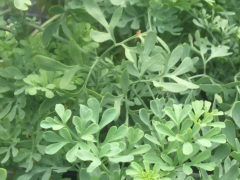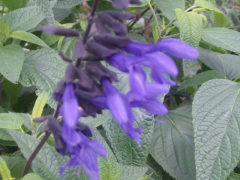
‘Prairie Glow’ Brown-eyed Susan
Rudbeckia triloba 'Prairie Glow'
A butterfly magnet, this compact, well-branched, and floriferous Rudbeckia produces gold-tipped blooms with bronzy orange … Continued
Drought-tolerant and drought-resistant plants may still need supplemental water from time to time, but they can survive periods of dryness without dying.
Drought-resistant plants like cactus, hens and chicks, and sedums can go for very long periods without water and do not tolerate poorly drained locations. Drought-resistant tropical plants grown indoors in winter like cactus, Sansevieria, Echeveria, and other succulents sometimes fail due to overwatering.
Drought-tolerant plants grow in many textures and sizes and have different adaptations that help them get through periods of drought:
The latter two types of plants are drought tolerant once established because any new planting, regardless of drought tolerance, needs to be watered during the first growing season to allow roots to reach the depths needed to access moisture during dry periods.
It’s also important to note that survival may not mean that the plant will look its best during this time. Watering weekly for a longer period of time will result in the best-looking gardens with the highest tolerance for drought. During the hottest, dryest times in summer, watering deeply twice a week is recommended. These less frequent waterings will encourage root systems to expand, making it easier for plants to access moisture when their environment is dry.
Winter drought has become a bigger problem in recent years as snowfall declines. Evergreen plants are especially vulnerable during winter drought because their foliage continues to shed moisture while dormant deciduous plants have shed their leaves and can conserve moisture in woody stems and underground. Watering shrubs and trees in winter on days when the temperature allows (above freezing) will help ensure their healthy return in spring.
Here are some drought-tolerant and drought-resistant plants to grow—

Rudbeckia triloba 'Prairie Glow'
A butterfly magnet, this compact, well-branched, and floriferous Rudbeckia produces gold-tipped blooms with bronzy orange … Continued

Ruta graveolens
Lacy blue-green ornamental herb is known as the “herb of grace.” Rue was once thought … Continued

Ruellia humilis
Tubular, bell-shaped, petunia-like flowers up to 3″ long open from May to October on drought-loving … Continued

Rumex sanguineus
Distinct red veins color the foliage of this 15″ highly ornamental but also edible vegetable. … Continued

Saccharum ravennae (formerly Erianthus ravennae)
Showy plumes tower 8-10′ tall in summer. An excellent instant privacy planting especially useful between … Continued

Salix candida 'Jefberg'
Iceberg Alley™ is a native plant discovered by the Memorial University of Newfoundland and Labrador … Continued
Salix matsudana ‘Torulosa’
Grow in any soil soils in full sun or shade. Prefers full sun. Prune as … Continued

Salix babylonica
These water-loving trees are also drought tolerant and provide valuable wildlife habitat. A harbinger of … Continued

Salvia guaranitica 'Black and Blue'
‘Black and Blue’ has the most amazing deep blue blooms with black stems.

Salvia azurea
Showy large flower spikes of sky blue in late summer and fall. The perfect color … Continued

Salvia nemorosa 'May Night' ('Mainacht')
Perennial Plant Association 1997 Perennial Plant of the Year! Award-winning ‘May Night’ salvia is a … Continued

Salvia nemerosa Color Spires® 'Crystal Blue'
Striking cool sky blue flower spikes open over neatly mounded, aromatic foliage. Lovely when planted … Continued